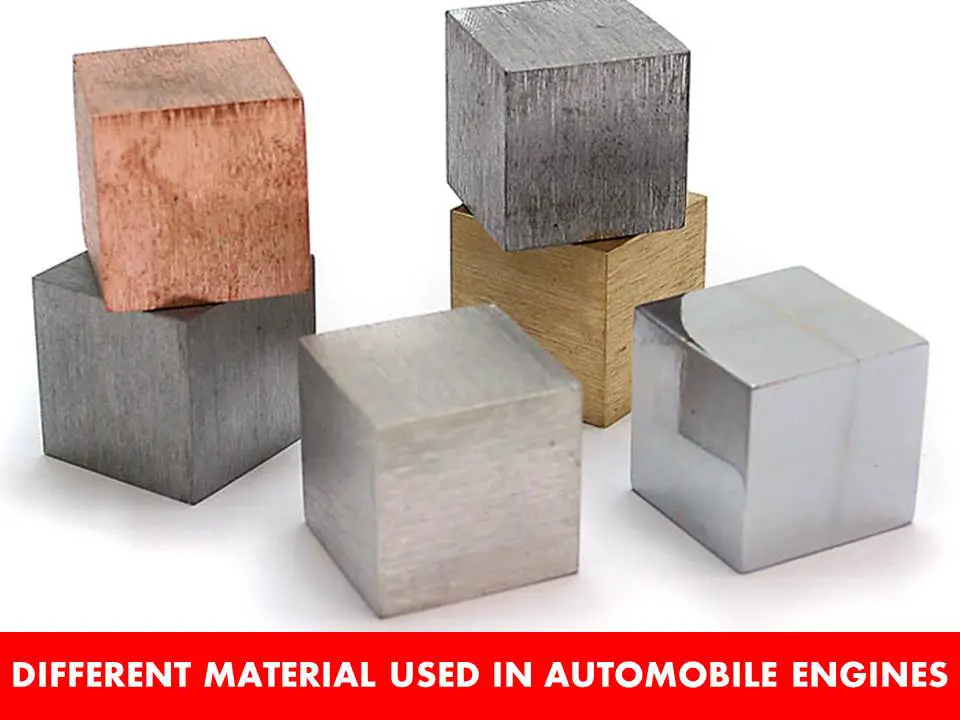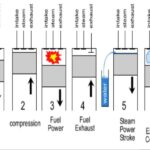An automobile engine is combination of various parts in which each part performs a different function. All these parts work together to convert chemical energy of fuel into mechanical energy. Different part of an engine works in different operating conditions. That’s why every part is made by different material. These materials decide its performance and the maximum operating condition i.e. temperature, pressure etc.

Different manufacturer uses different materials for every part to make their engine unique. Beside that, an engine consist some parent materials which can’t be replaced by any other material.
This article provide a list of all those engine material used in automobile industries. I hope you would like it.
Engine Materials:
| S. No. | Part | Material | Manufacturing Process | Remarks |
1. | Cylinder Block | High Grade Cast Iron, Aluminum alloy | Casting | Under high pressure and temperature, Made in Single Unit |
2. | Cylinder Head | High Grade Cast Iron,Aluminum alloy | Casting or Metal Forming | Upper Part of Cylinder Block Made in Single Unit |
3. | Crankshaft | Steel alloy, Spheroidal Cast iron, Nickel alloy | Forging | Under high fatigue load, that’s why made by forging. |
4. | Piston Rings | Fine Grain Cast Iron, | Casting | Required lower coefficient of friction |
5. | Connecting Rod | Alloy Steel, Nickel steel, Chrome Steel, Chrome Vanadium Steel,Aluminum | Forging | Connect Crank Shaft to Piston |
6. | Piston | Aluminum Alloy, Cast Iron alloy | Casting | Should be light weight and should have lower coefficient of expansion |
7. | Camshaft | Alloy Steel | Forging | Under high fatigue load |
8. | Valves | Alloy Steel | Metal Forming, | Inlet and Outlet Valve |
9. | Engine Bearing | Bronze Steel, White Metal, | Casting | Bronze steel for low thrust and white metal for heavy thrust |
10. | Cylinder Liner | Alloy Cast iron with Chromium, Vanadium, Molybdenum | Casting | It reduce wear and tear of cylinder wall |
11. | Gudgeon Pins | Alloy Steel | Forging | Connect connecting rod to piston |
If you like this information, don’t forget to share it. Subscribe our website for more interesting information.


